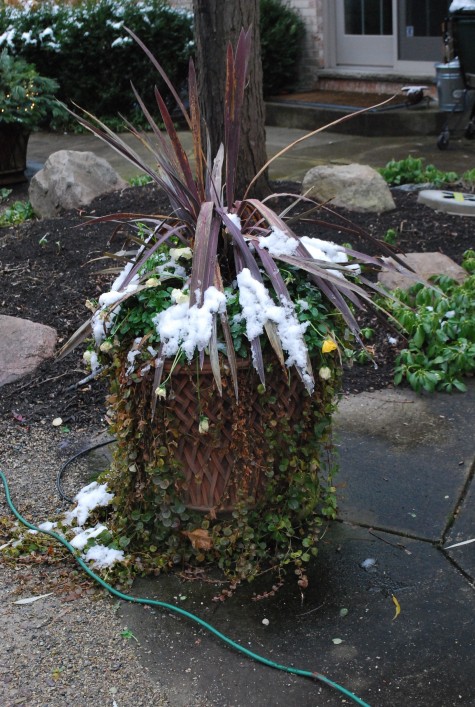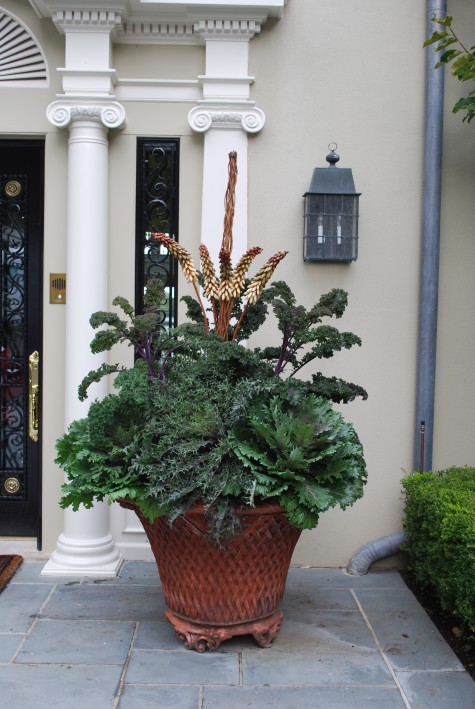These pots are a bit of a bedraggled mess, but there are some good things about them. It is proof positive that we have 4 seasons, each of which lasts about three months. I planted them the end of September- that makes this planting just shy of three months old. This client got a full season’s worth. I did have a client who did not plant fall pots this year. By October 15 she was wondering when the winter pots could be done.
Twigs and greens become available in the early part of the winter season. The twigs arrive after all of the leaves have dropped; in a good year, this is November 15. The winter cut greens are not far behind. She emailed me threee times-that fall season with empty pots proved to be a long one for her. This fall pot is finally beginning to succumb to the effects of relentless fall rains, and cold. The kale are still amazingly fresh looking and colorful.
The mess of a deteriorating situation reminds me of the look of my perennial garden in early winter. The grasses bend, go over, break off, and blow down the street. The kales are still their inflexible and massive selves. Brown is beginning to seem like the dominant color. Clearly my client has not touched these pots up in any way. All of the dead leaves are still there. Not one thing has been snipped off, propped up, or fluffed out. What I am looking at is the end of the fall season, plain and simple.
I don’t mind the look of plants going dormant, or succumbing to the cold. There is a certain stark beauty in that. I had to chop back all of the perennials in my rose garden early this fall, as I repainted all of the trim and windows on the house. I am already missing seeing that garden in its early winter incarnation.
This spike will eventually dry to a pale cream color. The wiry stems firmly resist decomposition. Would that my hosta leaves would dry, rather than collapsing into mountains of yellow mush. Hosta leaves are mostly water; a good frost finishes them off for good. Have you ever tried to rip a spike leaf in half? The entire plant would come out of the ground first. If you have a plan to leave your dead plants in your pots over the winter, spikes and grasses will brave the winter weather better than most.
Certain plants represent robustly-all fall long. The cabbages and kales far outlast the pansies, and the creeping jenny. The seed heads of grasses far outlast their foliage. Vinca maculatum is the most amazingly cold resistant plant. It is as green as green can be, in December.
There are those bridge plants-plants that can thrive for more than one season. The succulent trailer known as angelina is green all year round for me. Persian Queen geraniums are great in the summer, and good very late into the fall. The fairly new perennial geranium Rozanne is still throwing flowers in December. Some pansy cultivars planted in the fall are right back the following spring. I probably will redo this container for winter, but I do not really need to do so anytime soon.

















